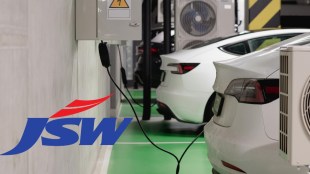By Alun Jones
Green, clean, sustainable, efficient, reliable, comfortable, practical, convenient, affordable, and connected—these are all aspects customers expect from their vehicles, and all these elements impact the living room space of vehicles.
It could be argued that since the advent of passenger ICE vehicles, there has been little fundamental change to the offerings OEMs provide customers, outside of improvements to comfort, affordability, reliability, and efficiency. Entertainment and connectivity would have been limited to a radio or, if you were lucky, a DVD player, perhaps with a USB port for connecting to a media player.
Driving the change forward
The advent of Electric Vehicle technology into mainstream automotive passenger vehicles, coincided with a fresh customer base. This provides the catalyst for change in a space that has remained constant for many years. The interior environment of new vehicles needs to offer lightweight materials that support vehicle efficiency (mass for range), while being sustainable and durable, addressing customer expectations and environmental needs within a practical and convenient space with ever-higher customer expectations of convenience, connectivity, and entertainment.
Instrument panels are becoming sleeker and more minimalist in design, with vital information and functions for the driver managed and conveyed through touch-screen infotainment technology. Screens are extending into the passenger environment, providing interactive entertainment and connectivity opportunities. Smart surfaces are eliminating visible switches and the need for mechanical switchgear.
Controls and functions are managed through smart surfaces, providing haptic and illuminated feedback to the operator. Touch controls and smart surfaces will be a growing area in the coming years. Voice command is improving, but limitations remain, potentially introducing frustration to the driver and raising safety concerns through operational frustration. Touch, as our most intuitive sense learned from early life experiences, provides robust interaction for critical functions.
Ownership change
All these HMI developments also need to align with the green expectations of the cabin environment. Recycled plastic bottles, sustainable rattan, and plant leather from diverse vegetation sources are being developed and introduced on a growing basis. These products not only address the green aspect but also contribute to the lightweighting of vehicles.
As we move towards more connected and sustainable vehicles in terms of HMI functions and materials, What about owner expectations of these vehicles? With this new generation embracing Electric Vehicles, there’s a philosophical shift in car ownership expectations. The current and upcoming generations might be the first since affordable passenger vehicles were introduced to not aspire to car ownership. Direct vehicle ownership will decline, but vehicle usage will increase. This non-vehicle-owning customer base will demand vehicle hire and hailing services for specific uses such as final mile services, weekend vacations, and family transport.
This ownership shift will change the expectations placed on OEMs. Customers will request ‘fleet’ vehicles to support various hire and hailing services across international markets. This opens up modular Interior ‘Install and go’ solution opportunities that provide different cabin configurations. Modular systems compatible with a standard base vehicle will offer flexibility for fleet and hire operators to mix configurations swiftly in response to vehicle application needs.
Urban ride-hailing services in different markets will have varying customer expectations of trim, reflecting convenience, comfort, and luxury. Modular systems introduce flexibility to the cabin, including consoles, finishers, surface treatments, and lighting, allowing agile solutions for specific country and city markets. This approach provides service operators with a flexible product capable of quick adaptation and deployment to specific markets.
Modular trimming allows service operators to agile fleet management across markets, deploying vehicles rapidly to specific content by reconfiguring the modular interior. End users hiring for longer than final mile needs may request a cabin with maximum storage and require only one seat, while others may need maximised seating with optimised storage for four occupants with luggage.
These agile modular vehicle cabins enable OEMs to provide a base one-vehicle solution that offers the flexibility service providers demand to meet optimised end-user expectations across varied markets. With the development of smart surfaces, new HMI experiences, and modular system solutions, combined with a shift in end-user vehicle ownership aspirations, a more cross-functional symbiotic relationship between OEMs, trim suppliers, and service providers will evolve.
Conclusion
End users will have varied expectations of cabin trim functions across markets, whether in city, country, or global settings. To meet these demands effectively, the introduction of modular interior systems will grow. Base vehicles, which can have modular interior content tailored to specific markets, cities, and individual customer preferences, will become an increasing market.
This marks a return of the coachbuilder in a sense, with the coachbuilder being the service provider of trimmed vehicles to specific customer requests and expectations on a subscription/demand basis.
The author is Domain Leader – Interiors, Tata Technologies.
Disclaimer: Views expressed are personal and do not reflect the official position or policy of Financial Express Online. Reproducing this content without permission is prohibited.




















